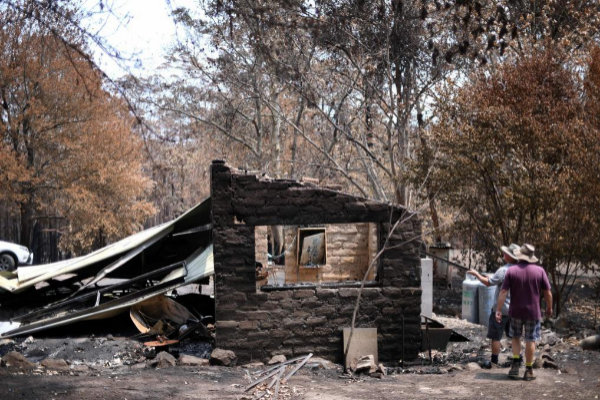- NASA: The smoke from the fires of Australia goes around the Earth
- Investigation: The Prime Minister of Australia admits errors in the management of the fires that already add 27 dead
The rain has brought relative relief to the emergency situation caused by fires in southeastern Australia, although storms have caused severe flooding in Melbourne and other areas. Even so, more than 80 outbreaks remain open in New South Wales and Victoria in fires that have caused at least 28 fatalities and affected an area of more than 10 million hectares.
In St. Albans , torrential rains recorded a record 54 millimeters per square meter in just half an hour, with gusts of 110 kilometers per hour. Alerts for fire and smoke, which forced to partially cancel the start of the Australian Open Tennis, gave way to severe flooding.
"If what we are seeing now are the first changes attributable to climate change, what will happen when the global rise in temperatures reaches 2 or 4 degrees?" Asks Professor Brendan Wintle of the University of Melbourne . "This is not the new normal, but the transition to something we have never experienced."
The warmest year recorded
2019 was in fact the second hottest year ever recorded (surpassed only by 2016, due to the weather phenomenon known as El Niño ). The global temperature was 1.1 degrees above the pre-industrial era, although in Australia the rise was greater than 1.5 degrees (the "red line" drawn by scientists).
"In 2019, Australia had its hottest and driest year according to the records," said Petteri Taalas , general secretary of the World Meteorological Organization (WMO) , "and that served as the setting for the huge forest fires that have been devastating to people and property, wildlife, ecosystems and the environment. "
WMO forecasts that in 2020 extreme weather events such as those we are seeing in Australia will be sharpened, where temperatures such as the 49.9 degrees reached in Nullarbor last December were recorded last year. Heat waves and fires have left the torrential rains this week that will last until Friday, with an estimated average of 10 millimeters per square meter in New South Wales and Victoria.
"The rain is a bit of a double-edged sword in this situation," warns meteorologist Sarah Scully in statements to The Guardian . "Large amounts of water and gusty winds make floods very likely and increase the chances of tree falls and landslides in burned areas."
According to the criteria of The Trust Project
Know more- Australia
- Fires
- Climate change
- science
- Science and Health
United Kingdom The British police include the environmental group Extinction Rebellion in the list of "extremist ideologies"
Oceania Australia fires heat up debate over climate crisis
Climate crisis The rise in temperatures in the oceans sets a new record in 2019

